#Stefan vogt
Text
New Old Games
The Game Boy turns 35 this year, with the anniversary of its first release in Japan just two days away. In recent years, we’ve seen the Game Boy celebrated more than ever. Nintendo officially added the platform and a library of games to its Nintendo Switch Online service. Companies like Analogue and FunnyPlaying have released FPGA-based consoles that emulate the original hardware and support…

View On WordPress
#dos#game boy#gb studio#high stakes#horatiu.nyc#krystman#lazy devs academy#msx#new games for old hardware#pico-8#Stefan vogt#the curse of rabenstein#traumatarium#traumatarium: penitent
0 notes
Text
69 tote Vögel unter einer Windpark-Anlage entdeckt
Der Tages-Anzeiger (TA) bezweifelt, dass die Zahl der Vögel, die den Rotorblättern der Anlage zum Opfer fallen, unterschätzt wird.
In einem ganzseitigen Artikel berichtet die Zeitung, dass ein Biologe der Schweizerischen Vogelwarte in Sempach im Juni 2021 unter einem der Türme des Windpark Gotthard 69 Vogelkadaver gefunden hat. “Ich war beeindruckt, wie viele tote Tiere ich rein zufällig…
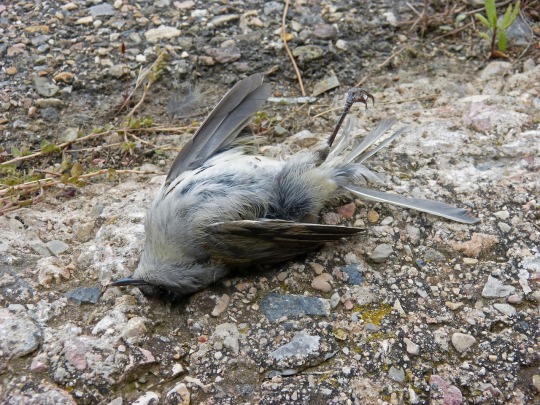
View On WordPress
0 notes
Text
Perhaps it’s apt that a dying political ideology seeks redemption in a dead discipline. As the Israeli government and public become ever more vocal and defensive about their daily practice of abuse and murder, as another Nakba is initiated with impunity and in fact legally sanctioned, liberal Zionists continue to dwell in what Saree Makdisi has called a “culture of denial.”[1] Purportedly aghast at what their Israel has become, some intellectuals—rather than honestly reckoning with the past—resort to desperate exercises in obfuscation. A new book edited by Stefan Vogt, Derek Penslar, and Arieh Saposnik, Unacknowledged Kinships: Postcolonial Studies and the Historiography of Zionism (2023), seeks both to rescue Zionism from its history of violence in Palestine and delegitimize efforts for Palestinian liberation.
“Complexity” is the order of the day. A history of colonialism that has become clearer by the hour, both because of its increasing desperation on the ground and the efforts of committed scholars to carefully expose its methods and rhetoric, is made opaque. Devoting all their energies to language, to the cherry-picked utterances of one or another Zionist, at the complete exclusion of the material reality of Zionism in Palestine or Israel’s insidious role in the Arab world or across the three continents, is the basis of this endeavor. The editors claim—as Penslar has done since his well-known and widely criticized 2001 article “Zionism, Colonialism and Postcolonialism”—that Zionism cannot be understood as “colonial” because it was both an anti-colonial nationalist movement (even “subaltern”) not a colonial enterprise projected from a metropole and a postcolonial, developmentalist, state like so many others.[2] And if one must reluctantly claim Zionism as colonialism and Israel as colonial, that can only be done in reference to the events of 1967 and after (and even then, with extensive hand-wringing, or in the case of Johannes Becke’s contribution to the volume, tendentious comparison). The colonial project in Palestine explicitly initiated at the end of the nineteenth century by European Zionist settlers, facilitated by the British Empire in the 1920s, accelerated in the 1930s, consecrated in 1948, and continuing to this very day, is rendered irrelevant.
91 notes
·
View notes
Text
Perhaps it’s apt that a dying political ideology seeks redemption in a dead discipline. As the Israeli government and public become ever more vocal and defensive about their daily practice of abuse and murder, as another Nakba is initiated with impunity and in fact legally sanctioned, liberal Zionists continue to dwell in what Saree Makdisi has called a “culture of denial.”[1] Purportedly aghast at what their Israel has become, some intellectuals—rather than honestly reckoning with the past—resort to desperate exercises in obfuscation. A new book edited by Stefan Vogt, Derek Penslar, and Arieh Saposnik, Unacknowledged Kinships: Postcolonial Studies and the Historiography of Zionism(2023), seeks both to rescue Zionism from its history of violence in Palestine and delegitimize efforts for Palestinian liberation.
"Complexity” is the order of the day. A history of colonialism that has become clearer by the hour, both because of its increasing desperation on the ground and the efforts of committed scholars to carefully expose its methods and rhetoric, is made opaque. Devoting all their energies to language, to the cherry-picked utterances of one or another Zionist, at the complete exclusion of the material reality of Zionism in Palestine or Israel’s insidious role in the Arab world or across the three continents, is the basis of this endeavor. The editors claim—as Penslar has done since his well-known and widely criticized 2001 article “Zionism, Colonialism and Postcolonialism”—that Zionism cannot be understood as “colonial” because it was both an anti-colonial nationalist movement (even “subaltern”) not a colonial enterprise projected from a metropole and a postcolonial, developmentalist, state like so many others.[2] And if one must reluctantly claim Zionism as colonialism and Israel as colonial, that can only be done in reference to the events of 1967 and after (and even then, with extensive hand-wringing, or in the case of Johannes Becke’s contribution to the volume, tendentious comparison). The colonial project in Palestine explicitly initiated at the end of the nineteenth century by European Zionist settlers, facilitated by the British Empire in the 1920s, accelerated in the 1930s, consecrated in 1948, and continuing to this very day, is rendered irrelevant.
For the editors and a number of the contributors, “postcolonialism” refers principally to the work of Homi Bhabha and his notion of “the in-between.” The binary of colonizer and colonized is deemed insufficient for understanding Zionism by the editors, and Bhabha’s writing on the “hybridity” and “instability” produced by colonialism is taken as a guiding gesture.[3] Recourse to Bhabha and the wielding of his work explicitly against that of the anti-colonial Edward Said—Unacknowledged Kinships foil from its first paragraph onwards—has its origins in the reception of Anglo-American postcolonial theory in Israel during the 1990s. The journal Teoria ve Bikoret, founded in 1991 in Jerusalem and edited until 1999 by the Israeli philosopher Adi Ophir, was the principal forum for post-colonial theory in Israel. “Academic and journalistic texts” Ella Shohat writes of this period, “have fashioned a kind of folk wisdom that posits Homi Bhabha as having surpassed Said.” “Without engaging in any depth Said’s oeuvre,” Shohat continues in an indispensable 2004 article for the Journal of Palestine Studies “or the varied debates around postcolonial studies, the facile recital of the Bhabha-beyond-Said mantra has come to be an entrance requirement for ‘doing the postcolonial’ in Israel.”[4]
Thirty years later, the editors of Unacknowledged Kinships seek novelty. The reasons for which are political, they argue. The collaboration of postcolonial studies and Zionist historiography, the editors hope, “could help overcome the destructive competition that often exists between the struggles against racism and the struggles against anti-semitism, in favor of a joint effort to confront past and present forms of exclusion, subordination, and persecution” (5). What the editors clearly mean is that they would prefer if anti-colonial and anti-racist organizers and intellectuals would desist from criticizing Zionism and Israel on anti-colonial and anti-racist grounds. The editors are explicit later in the introduction when they claim that postcolonial scholars’ support for Palestinians and BDS is partly due to their “sometimes insufficiently complex view of the conflict” (15). The editors take ambiguity—the other keyword that dominates the book—as “the very foundation of postcolonial studies” (15). Ambiguity, they argue, must be reaffirmed. [...]
#readings#such a damning critique of zionist revionism and their grotesque apologetics masquerading as historiography#zionism#postcolonialism#Esmat Elhalaby
5 notes
·
View notes
Text

Christian "Ray Volva / Ray Kitzler" Jost

David "El Davide" Vogt and Stefan "Mitch Buchanan" Gemballa
16 notes
·
View notes
Text
Von der Theorie in die Praxis

UMCH-Studierende am Moerser St. Josef Krankenhaus
Seit Anfang 2022 ist das St. Josef Krankenhaus in Moers Akademisches Lehrkrankenhaus der Universitätsmedizin Hamburg. Der Kooperationsvertrag mit der UMCH – Universitätsmedizin Neumarkt a. m. Campus Hamburg – stellt eine große Wertschätzung der medizinischen Arbeit des Krankenhauses dar. Die Studierenden absolvieren ihr Praktisches Jahr in den verschiedenen Kliniken des Moerser Krankenhauses. Während dieser Zeit sollen die Student*innen ihre bereits an der Uni erworbenen theoretischen Kenntnisse bei der Betreuung und Behandlung der Patientinnen und Patienten anwenden und vertiefen.

Prof. Dr. Christoph Vogt, Direktor des Zentrums für Innere Medizin an den GFO Kliniken Niederrhein St. Josef Krankenhaus Moers, begrüßte die Student*innen zum wiederholten Praxiseinsatz. Während ihrer Zeit hier in Moers werden die Studierenden von Stefan Walther, Assistent Studiensekretariat, organisatorisch betreut.
Read the full article
0 notes
Text
Dom kulture Studentski grad
Utorak, 3. oktobar
20. Evropski festival animiranog filma BALKANIMA

Današnjom projekcijom filma “Crvena kornjača”, oskarovca i našeg gosta na festivalu, Mikaela Dudoka de Vita, najavljujemo početak 20. jubilarne Balkanime, Evropskog festivala animiranog filma, koji će trajati do 8. oktobra. Festival će biti zvanično otvoren sutra, u Velikoj Sali Doma kulture “Studentski grad” u 20 časova.
11.00 Studio 26
SIMPLE WORKSHOP, Stefan Vogt
18.00 Mala sala
Studentski takmičarski 1
19.30 Galerija
Otvaranje izložbe
FLOAT, Jelena Milunović
20.00 Otvaranje festivala/Festival opening
Velika galerija
Izložba
BALKANIMA: 20 godina
20.30 Velika sala
Takmičarski program 1
22.00 Amfiteatar
0 notes
Photo


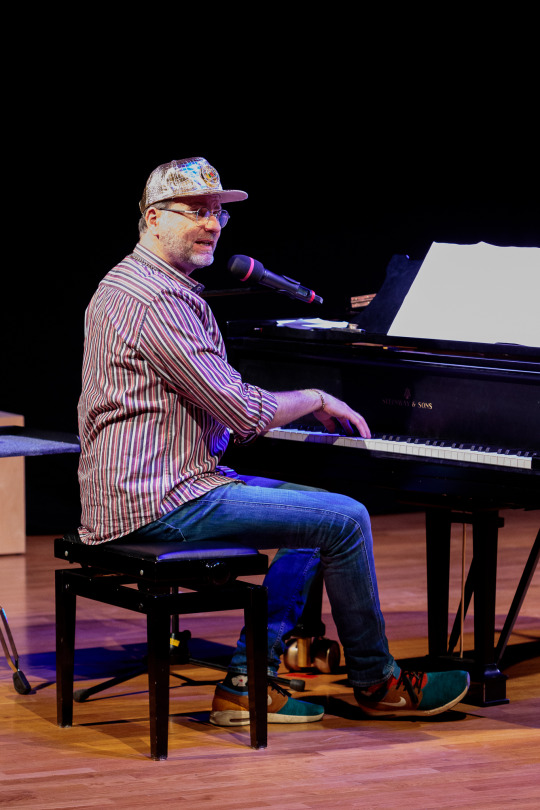



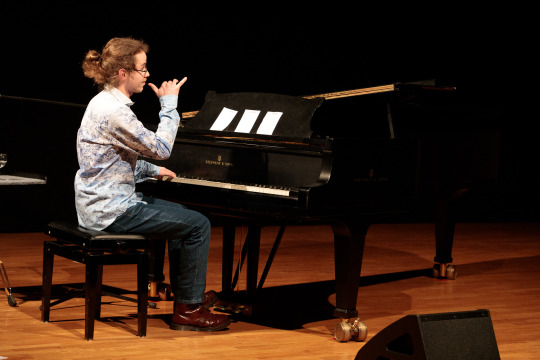
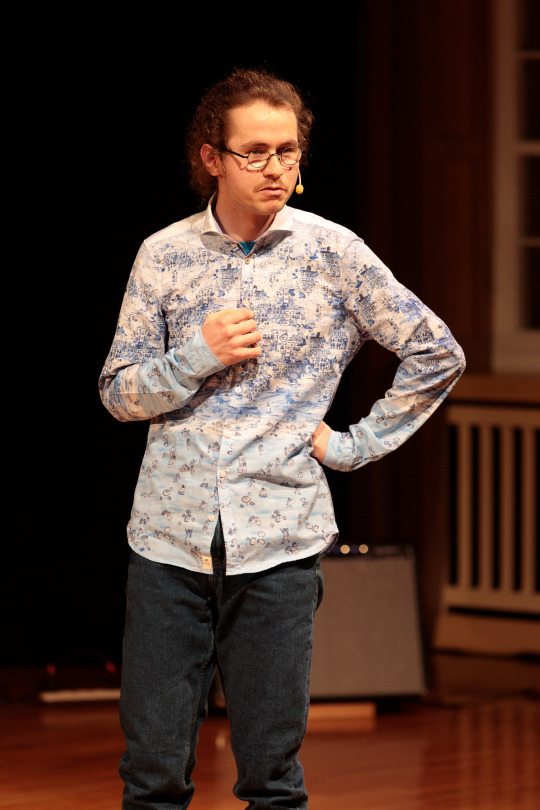


Unschweizerische Lieder von Simon Hotz (St. Gallen). Außerdem Moderator des Abends Stefan Vogt und als musikalisches Warm-Up Erik Franzke und Thomas Paul Schepansky.
0 notes
Text

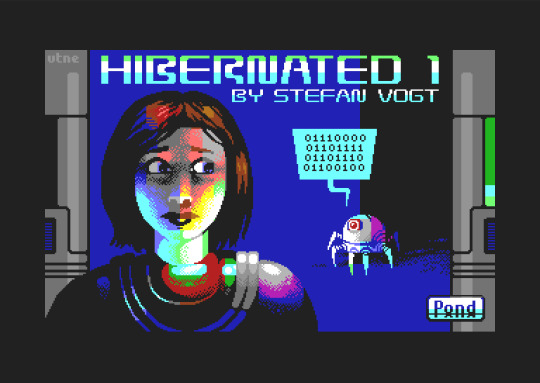



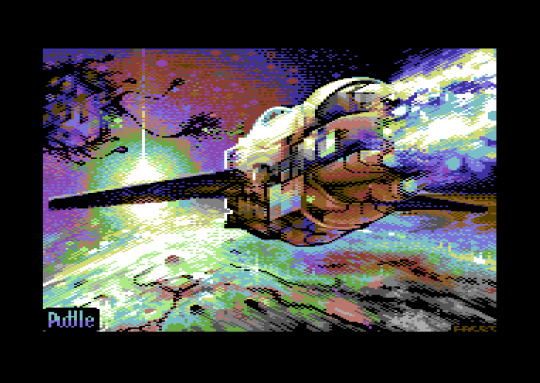
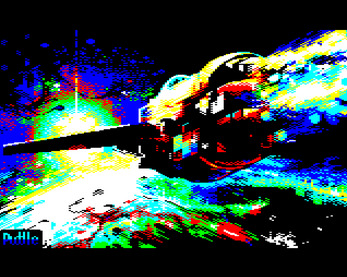
Link to the Director's cut version of Hibernated 1
Love the Vanja Utne artwork for the title screen.
And Facet's great pixel artwork.
3 notes
·
View notes
Photo







It’s a rare treat to get a new text adventure released all across 8-bit and 16-bit systems, especially one so beautifully illustrated. The Curse of Rabenstein comes with original graphics by Dylan Barry a.k.a. Dylan Burytheaded a.k.a. railslave (Amstrad CPC version) and converted to all other systems by the game’s main author Stefan Vogt (Amiga, Atari ST, DOS, ZX Spectrum/Next, Commodore 64/Plus/4). Yes, the team went true old-school and ported the game across main 80s/90s systems (at least the ones we had in Europe), adapting the art to each machine’s (often severe) limitations.

Chunky Amstrad CPC pixels on bottom (2:1 pixel aspect ratio), Amiga/ST/Dos conversion to squares above.
Gameplay itself is very enjoyable and I was able to get through it without hints in about an hour or two (just read the instructions to learn about the EXAMINE and SEARCH commands which carry you through most roadblocks). The atmosphere follows a colorfully moody medieval setting and progression towards the end will reward you with a spooky narrative and 20 beautiful location illustrations.

Commodore 64′s subdued palette lands an especially fitting version to the game’s graphics.
Physical releases of The Curse of Rabenstein are available from poly.play (around $30 for an actual box with many goodies inside, available per system) or you can get the digital versions from itch.io (pay what you want, even free). Time to fire up those emulators!
120 notes
·
View notes
Photo
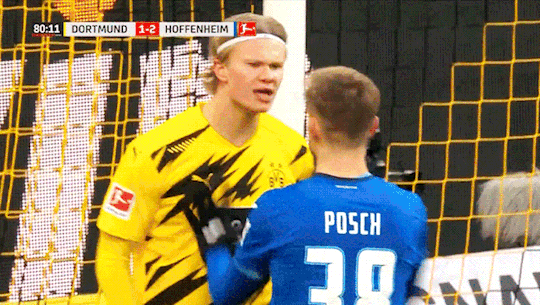




#borussia dortmund#erling haaland#marco reus#raphael guerreiro#jadon sancho#stefan posch#kevin vogt#florian grillitsch#13/02/21
73 notes
·
View notes
Text
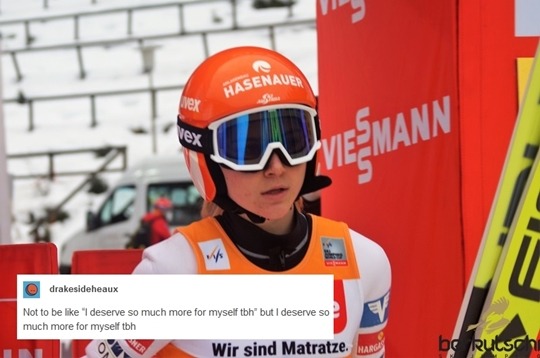
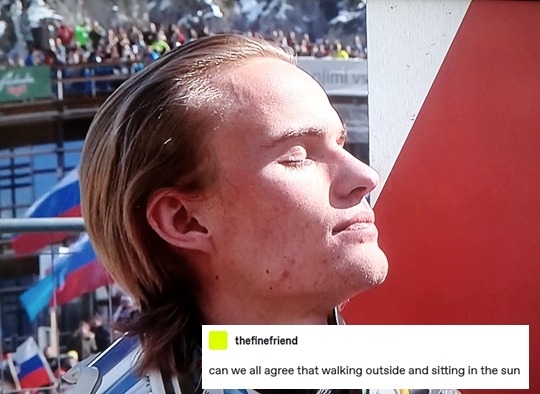
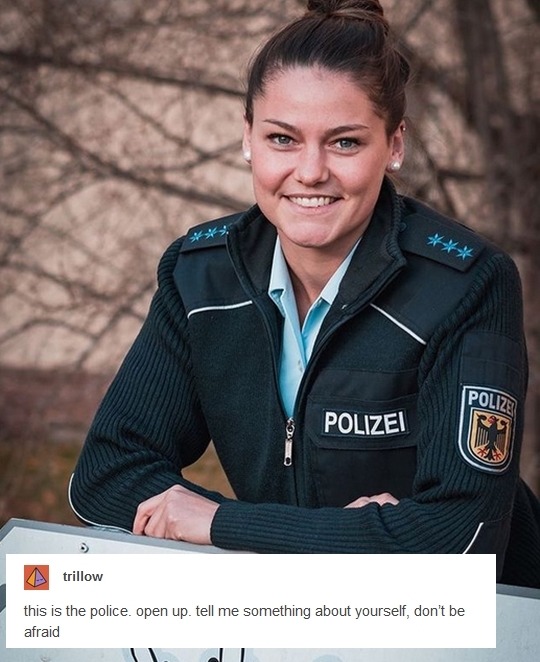


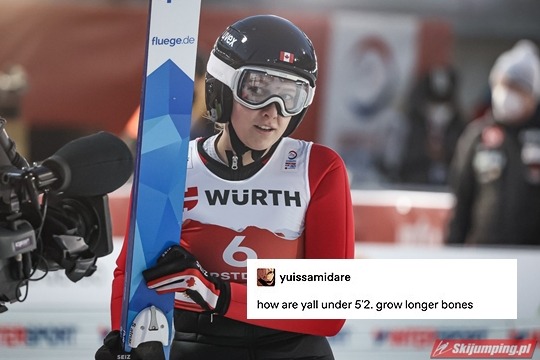
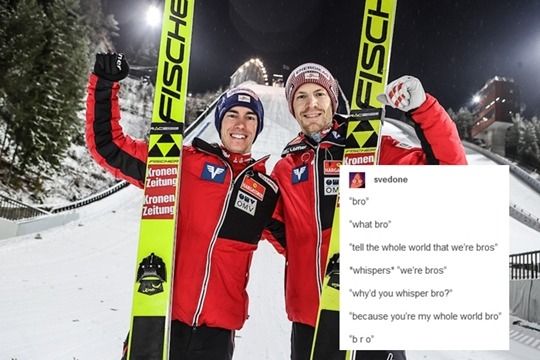
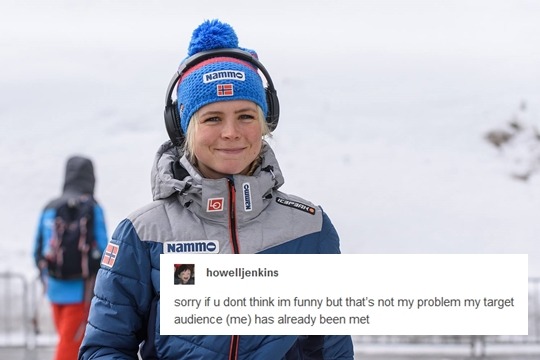
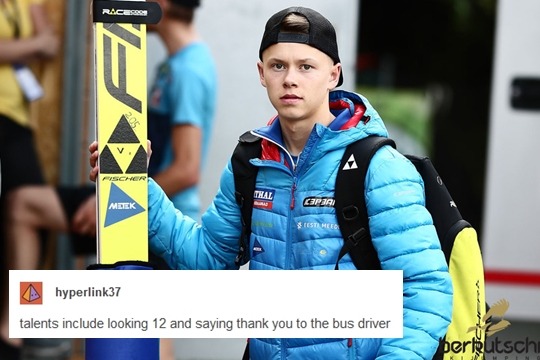

Ski jumpers + text posts [3/4]
#ski jumping#marita kramer#daniel andre tande#carina vogt#cene prevc#ryoyu kobayashi#nicole maurer#michael hayboeck#stefan kraft#maren lundby#artti aigro#lara malsiner#manuela malsiner#jessica malsiner#wsj#msj#moje#maren's one is for the whiny men on tt xoxo#text
46 notes
·
View notes
Text
Bundesliga 21/22 - TSG Hoffenheim (Teil Eins)
Oliver Baumann und seine Frau Charlotte

Philipp Pentke und seine Freundin Maura

Nahuel Noll
Luca Philipp
Joshua Brenet und seine Partnerin

Pavel Kaderabek und seine Frau Tereza

Ermin Bikakcic
Havard Nordtveit und seine Frau Anna

Kasim Adams
David Raum und seine Freundin Kathi

Benjamin Hübner und seine Freundin Paula

Kevin Vogt und seine Freundin Zoe

Kevin Akpoguma und seine Freundin Emily

Christopher Richards
Melayro Bogarde
Stefan Posch und seine Freundin Lena

Dennis Geiger und seine Freundin Sarah (ohne Bild)
3 notes
·
View notes
Text
Ski jumping teams for the FIS Nordic World Ski Championships (Oberstdorf 2021)
Austria:
Philipp Aschenwald
Manuel Fettner
Michael Hayböck
Jan Hörl
Daniel Huber
Stefan Kraft
Lisa Eder
Chiara Hölzl
Daniela Iraschko-Stolz
Marita Kramer
Eva Pinkelnig
Bulgaria:
Vladimir Zografski
Canada:
Mackenzie Boyd-Clowes
Matthew Soukup
Natasha Bodnarchuk
Natalie Eilers
Alexandria Loutitt
Nicole Maurer
Abigail Strate
Czech Republic:
Čestmír Kožíšek
Viktor Polášek
Filip Sakala
Vojtěch Štursa
Karolína Indráčková
Veronika Jenčová
Štěpánka Ptáčková
Klára Ulrichová
Estonia:
Artti Aigro
Kevin Maltsev
Finland:
Antti Aalto
Niko Kytösaho
Jarkko Määttä
Eetu Nousiainen
Arttu Pohjola
Susanna Forsström
Julia Kykkänen
Jenny Rautionaho
Julia Tervahartiala
France:
Julia Clair
Joséphine Pagnier
Germany:
Markus Eisenbichler
Severin Freund
Karl Geiger
Martin Hamann
Pius Paschke
Constantin Schmid
Katharina Althaus
Luisa Görlich
Anna Rupprecht
Juliane Seyfarth
Carina Vogt
Hungary:
Virág Vörös
Italy:
Giovanni Bresadola
Francesco Cecon
Alex Insam
Daniel Moroder
Jessica Malsiner
Lara Malsiner
Japan:
Junshirō Kobayashi
Ryōyū Kobayashi
Naoki Nakamura
Keiichi Satō
Yukiya Satō
Yūki Itō
Kaori Iwabuchi
Nozomi Maruyama
Yūka Setō
Sara Takanashi
Kazakhstan:
Sabirzhan Muminov
Sergey Tkachenko
Danil Vassilyev
Dayana Pekha
Norway:
Johann André Forfang
Halvor Egner Granerud
Anders Håre
Robert Johansson
Marius Lindvik
Daniel André Tande
Frida Berger
Thea Minyan Bjørseth
Maren Lundby
Silje Opseth
Anna Odine Strøm
Poland:
Dawid Kubacki
Klemens Murańka
Andrzej Stękała
Kamil Stoch
Jakub Wolny
Piotr Żyła
Kamila Karpiel
Nicole Konderla
Kinga Rajda
Joanna Szwab
Anna Twardosz
Romania:
Daniel Andrei Cacina
Andrei Feldorean
Nicolae Sorin Mitrofan
Mihnea Alexandru Spulber
Delia Anamaria Folea
Daniela Haralambie
Alessia Mîțu-Coșca
Andreea Diana Trâmbițaș
Russian Athletes:
Evgeniy Klimov
Ilya Mankov
Mikhail Nazarov
Mikhail Purtov
Denis Kornilov
Danil Sadreev
Irina Avvakumowa
Irma Makhinia
Kristina Prokopieva
Anna Shpyneva
Sofia Tikhonova
Slovenia:
Žiga Jelar
Anže Lanišek
Bor Pavlovčič
Cene Prevc
Domen Prevc
Peter Prevc
Urša Bogataj
Jerneja Brecl
Ema Klinec
Nika Križnar
Špela Rogelj
Sweden:
Astrid Norstedt
Frida Westman
Ukraine:
Vitaliy Kalinichenko
Anton Korchuk
Yevhen Marusiak
Andrii Vaskul
Tetiana Pylypchuk
USA:
Erik Belshaw
Decker Dean
Patrick Gasienica
Casey Larson
Andrew Urlaub
Annika Belshaw
Anna Hoffmann
Paige Jones
Logan Sankey
7 notes
·
View notes
Text
This is gonna be haaard
Day 8- What is your all time favourite podium?
Men's
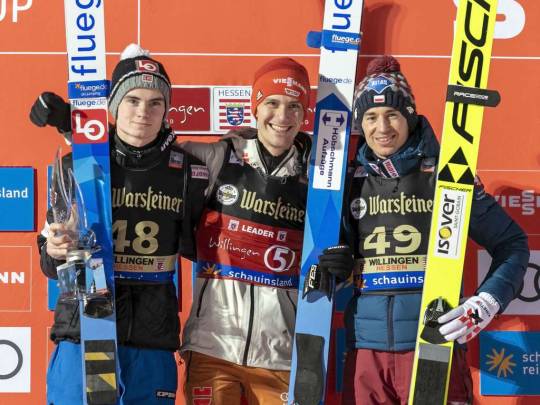
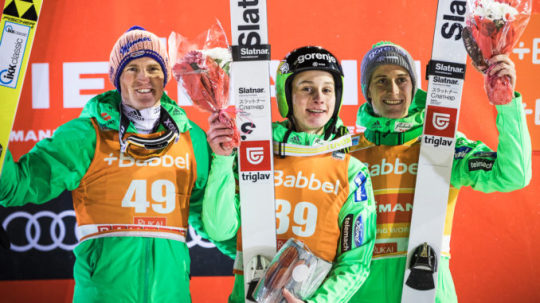
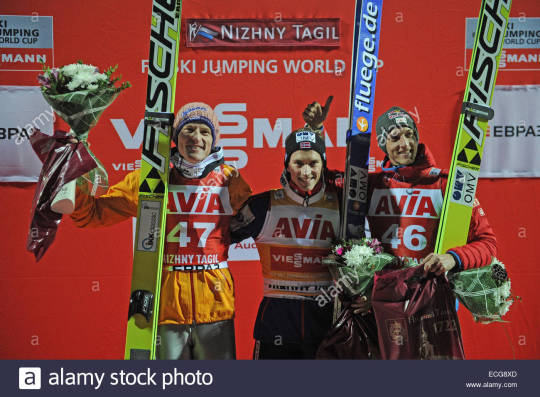
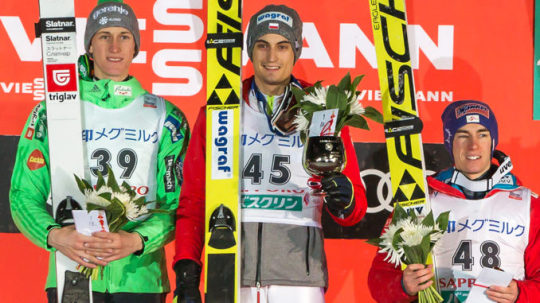
To-ta-ll-y these four. Don't @ me. For the record, these are Willingen 2019/20 (1. Stephan Leyhe 2. Marius Lindvik 3. Kamil Stoch), Kuusamo 2016/17 (1. Domen Prevc 2. Severin Freund 3. Peter Prevc) Nizhny Tagil 2014/15 (1. Anders Fannemel 2. Gregor Schlierenzauer 3. Severin Freund) and the hilarity that was the Sapporo 2016/17 podium (1. Maciej Kot and Peter Prevc 3. Stefan Kraft).
A very honorary mention has to go to 2019/20 season's Nizhny Tagil because it gave us these two podiums: (Saturday 1. Yukiya Sato 2. Karl Geiger 3. Philipp Aschenwald and Sunday 1. Stefan Kraft 2. Killian Peier 3. Ryuyu Kobayashi)
Women's
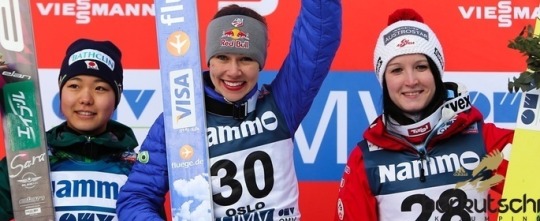



Ok, so, the reason I love the 2012/13 podium in Oslo (1. Sarah Hendrickson 2. Sara Takanashi 3. Jacqueline Seifriedsberger) is not only the women on the podium but also the fact that the comp before that in Trondheim was the exact same podium in the same order and the 2nd Ljubno competition of the season before also was exactly the same. The other three podiums are excellent too, just look at them: Hinzenbach 2014/15 (1. Carina Vogt 2. Daniela Iraschko-Stolz 3. Špela Rogelj), Planica 2013/14 (1. Sara Takanashi 2. Yuki Ito 3. Julia Clair) and Rasnov 2017/18 (1. Maren Lundby 2. Katharina Althaus 3. Nika Križnar)
Bonus: This crazy podium
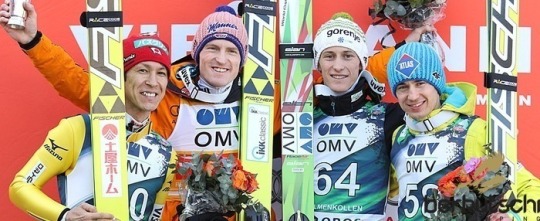
To all those who watched Oslo 2015 live: How did you survive this podium 🙌 Like, we have Sevi on 1st, Noriaki Kasai on 2nd and Kamil Stoch and Peter Prevc on 3rd! That is crazy!
#as you see i took a deep dive into Wikipedia#and why did nobody tell me that timi zajc won in the 18/19 season hgdff#skijumpingchallenge#day 8
3 notes
·
View notes
Photo

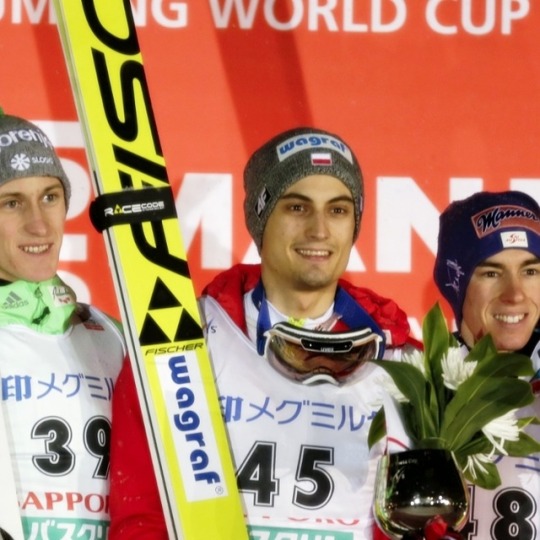
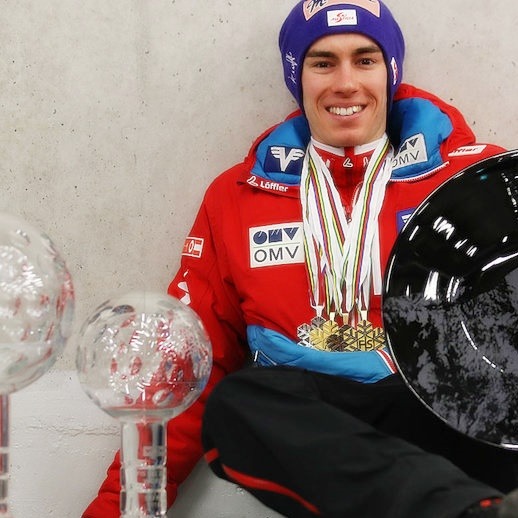
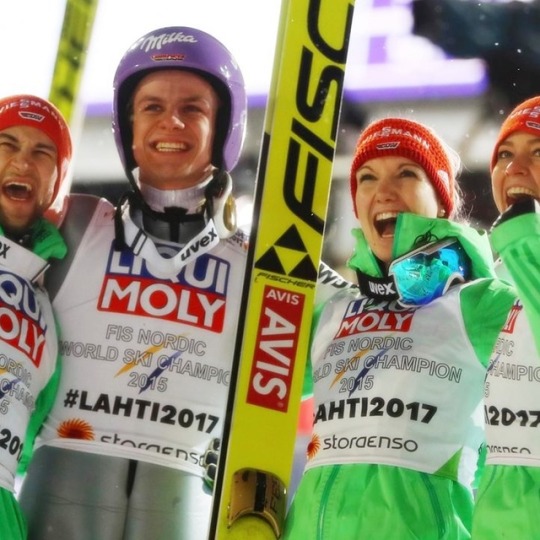
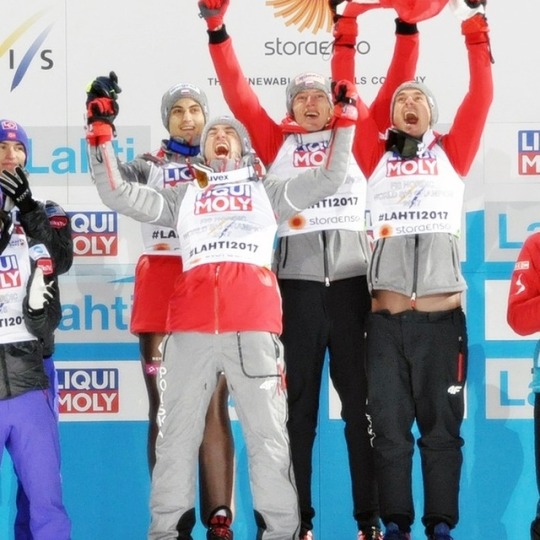
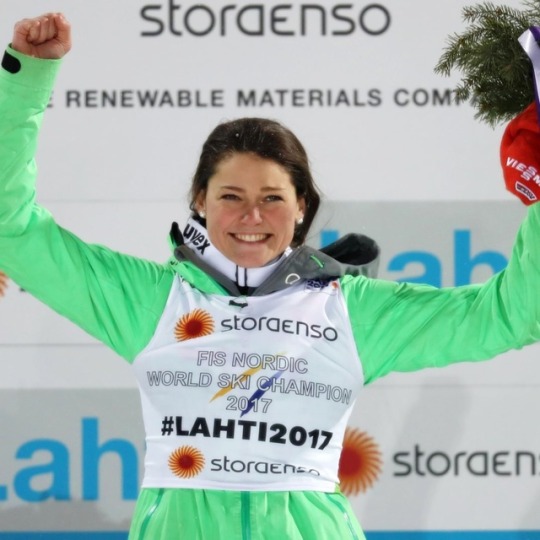
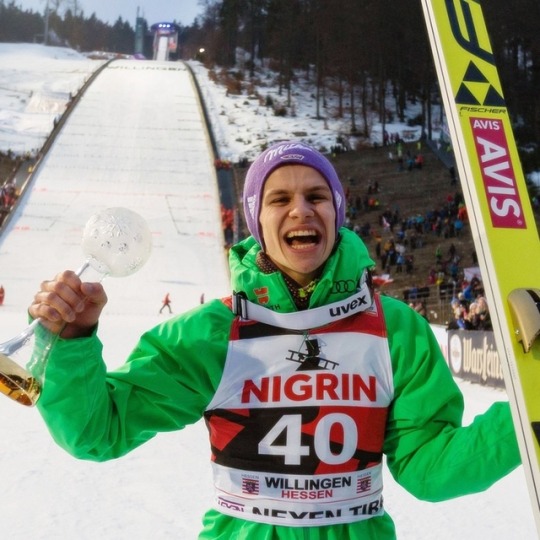
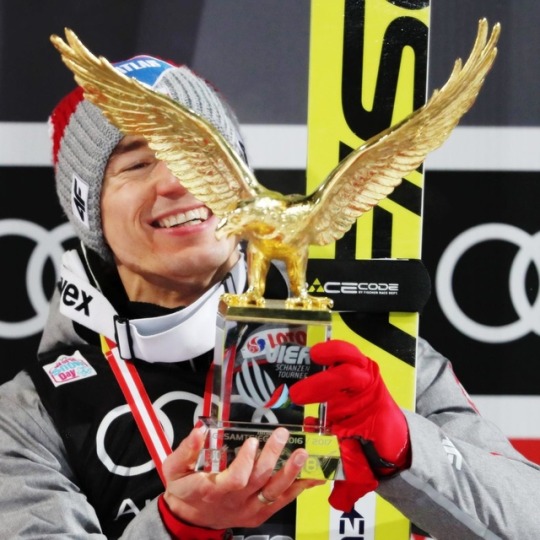
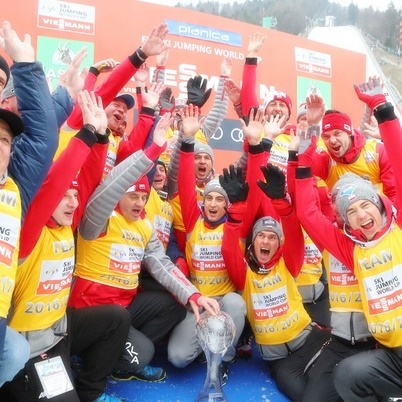
Ski Jumping Awards - Season 2016/17
6. Most impressive win
3rd Kot Sapporo / Kraft winning nearly everything / Team Germany Lahti / Team Poland Klingenthal / Stoch Four HIlls Tournament / Team Poland Lahti / Team Poland Overall / Vogt Lahti / Wellinger Willingen - 5,5%
#Andreas Wellinger#Kamil Stoch#carina vogt#markus eisenbichler#svenja würth#maciej kot#piotr zyla#Dawid Kubacki#Stefan Kraft#team Germany#Team Austria#team poland#ski jumping#sj wc 16/17#ski jumping world cup#ski jumping awards
33 notes
·
View notes